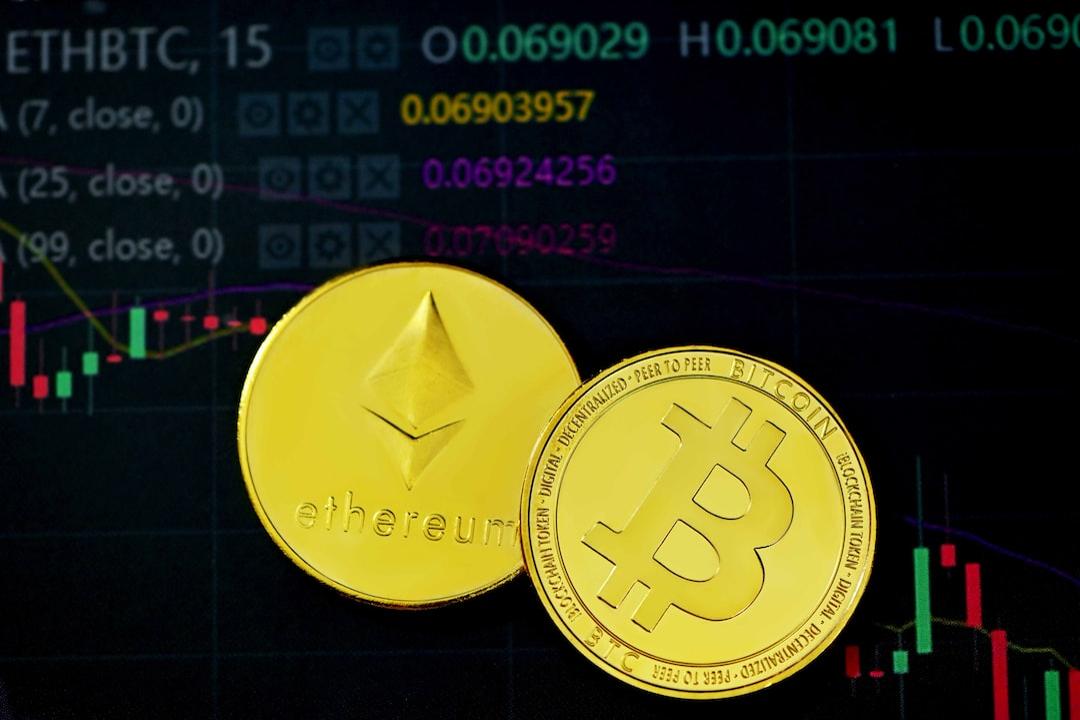Author | Vitalik
Translation | Odaily Planet Daily Nan Zhi

In my recent article on the differences between Layer 1 and Layer 2 scaling, I concluded that the most important difference between these two approaches is not technical but organizational (similar to the use in the field of “industrial organization”): the key is not what can be built, but what will be built, as it depends on how boundaries are defined between different parts of the ecosystem and how this affects people’s motivations and abilities to act. In particular, a Layer 2-centric ecosystem is inherently more diverse and more likely to naturally lead to a variety of different approaches to scaling, virtual machine design, and other technical features.
In my previous article, I emphasized a key point:
In this article, I argue that this is not only true technically but also culturally. Blockchains have not only unique technical trade-offs, but also unique cultures. On the second day after the Ethereum and Ethereum Classic (ETC) fork, the two blockchains were identical technically. But they were culturally distinct, a fact that helped shape significant differences in focus, user base, and even technology stack eight years later. The same is true for Ethereum and Bitcoin: initially, Ethereum was roughly “Bitcoin with smart contracts,” but ten years later, these differences have become more profound.
Kevin Pham compared the cultures of Bitcoin and Ethereum in a tweet in 2017. Both cultures have evolved: since 2017, we have witnessed the rise and fall of the “laser eyes” movement and the rise of movements like Ordinals, witnessing Ethereum becoming a Layer 2-centric ecosystem and both becoming more mainstream. But they still remain different, and maintaining this diversity may be for the best.
Culture influences several important aspects:
The types of changes made to the protocol – including quantity, quality, and direction
The ability of the protocol to remain open, censorship-resistant, and decentralized
The ability of the ecosystem to attract high-quality protocol developers and researchers
The ability of the ecosystem to attract high-quality application developers
The ability of the ecosystem to attract users – including matching user numbers and types
The public legitimacy of the ecosystem in the eyes of the outside world
If one truly values a blockchain’s decentralization, it is not enough to look at how the current technology achieves these goals, but also how culture values these goals. If a blockchain’s culture does not value curiosity and an open attitude towards new technologies, it may fail in both decentralization and speed, as it cannot adopt new technologies like ZK-SNARKs, which can enhance both aspects. If a blockchain is perceived by the public as a “casino chain” without any other meaning, it becomes difficult to attract non-gambling applications. Even attracting core protocol developers and researchers who are not interested in speculation becomes more challenging. Culture matters because it is, to some extent, upstream of almost everything else.
The Culture of Ethereum

Ethereum developers collaborating in Kenya in May 2024. The core research and development ecosystem of Ethereum is a subculture of Ethereum, although it is also quite diverse internally, with a lot of internal disagreements.
Researcher Paul Dylan-Ennis has spent a lot of time exploring and understanding the subculture of Ethereum. He identified three major subcultures of Ethereum:
Cypherpunks: A Cypherpunk is dedicated to open-source development and DIY technology. In Ethereum, Cypherpunks build infrastructure and tools but are neutral about how they are used. Historically, Cypherpunks valued privacy, but in Ethereum, it is not always a top priority.
Regens: Many influential voices in Ethereum are committed to adopting Regen approaches to build technology. Rooted in Vitalik Buterin’s interest in politics and social sciences, many Regens conduct governance experiments aimed at improving or even replacing contemporary institutions. This subculture is characterized by its experimental nature and interest in public goods.
Degens: Users driven purely by speculation and wealth accumulation, called Degens. Degens are financial nihilists who focus on current trends and speculation, hoping to escape the dilemmas of contemporary neoliberalism and capitalism through luck. Degens often embrace extreme risk.
These are not the only important groups, and one can even question the degree of their cohesion as groups, but this classification is interesting as a preliminary approximation (induction). As mentioned above, Cypherpunks include those interested in protecting privacy and freedom, as well as those interested in cutting-edge mathematics and cryptography without any strong ideological stance.
An important feature of these groups in Ethereum is that, due to Ethereum’s flexibility as a development platform (not just currency), each group has actionable platforms, not just discussions. Some rough examples:
Cypherpunks participate in Ethereum core research and development and write privacy software.
Regens engage in Gitcoin donations, traceable public goods funding, and various other non-financial applications.
Degens trade Meme tokens and NFTs and play games.
In my opinion, this branching of culture is beneficial for Ethereum. The Ethereum core development culture values high-quality thinking on advanced cryptography, game theory, and increasingly important software engineering topics. It values freedom and independence, the Cypherpunk ideals, and the blockchainized versions of these principles (e.g., “immutability”) with a focus on values and soft power.
These values are important and have positive implications, making Ethereum highly advantageous in aspects 1, 2, 3, and 6 of the cultural checklist in the previous section. But they are incomplete, firstly, the above description almost neglects how to attract application developers and users. Value-oriented values help provide confidence to users who “hold ETH and use Ethereum,” but that’s about it. Cultural diversification is a way to address this dilemma, allowing one subculture to focus on core development while another subculture focuses on expanding the boundaries of the ecosystem.
But this raises a question: Is there a way to further strengthen this cultural diversification?
Subcultures and Layer 2
This brings us to a perhaps underrated feature of Layer 2 – it is the ultimate stage for a subculture. Layer 2 allows for the emergence of subcultures with significant resources, enabling them to learn and adapt in order to win development. Layer 2 needs to be effective in multiple aspects, including attracting users and application developers, developing technology, and building a global community.
A key feature of Layer 2 here is that it is both an ecosystem and built for a specific purpose. Local meetup groups can form their own ecosystems and have their unique cultures, but their resources and execution power are relatively limited. DApps may have significant resources and execution power, but they are just programs that you can use, but you can’t build on them. Uniswap is great, but the concept of “building on Uniswap” is far less powerful than “building on Polygon.”
Layer 2 can and indeed does play a role in cultural specialization in several ways, including:
A greater willingness to develop users: Intentionally attract specific external participants, including individuals, businesses, and communities, to participate in the ecosystem.
Emphasis on value diversity. Does your community focus more on “public goods,” “good technology,” “Ethereum neutrality,” “financial inclusiveness,” “diversity,” “scaling,” or other concepts? Different L2s provide different answers.
Diversity of participants: Who does the community attract? What emphasis is given to specific groups, personality types, languages, regions?
Here are a few examples:

Optimism

ZKSync

MegaETH

Starknet
Polygon has achieved success through partnerships with mainstream companies and an increasingly high-quality ZK ecosystem; Optimism has Base and World Chain and a strong cultural interest in traceability funding and non-token governance; Metis focuses on DAOs; Arbitrum is known for high-quality developer tools and technical branding; Scroll focuses on “preserving the essence of Ethereum – minimization of trust, security, and open source”; Taiko emphasizes “seamless user experience,” “community alignment,” “safety first,” and “foundation.” Overall, each Ethereum Layer 2 has a unique “soul” – a combination of some aspects of Ethereum culture, plus its own unique twist.
How can a Layer 2-centric cultural approach succeed?
The core idea of a Layer 2-centric cultural approach is to balance the benefits of diversity and cooperation by creating a diverse collection of subcultures that still share some common values and work together to build critical infrastructure that advances those values.

Ethereum is attempting a path of diversification.
There are other attempts similar to the two-tier approach. The most famous example I can think of is EOS’s delegated proof-of-stake (DPoS) system from 2017. EOS’s DPoS allowed token holders to vote on which representatives would run the chain. The representatives would be responsible for creating blocks and reaching consensus on others’ blocks, and they would also receive a significant amount of tokens from EOS issuance. Representatives did a lot of community building to attract votes, and many of these “nodes” (such as EOS New York and EOS Hong Kong) eventually became independent well-known brands.
This ultimately proved to be an unstable system, as token voting is inherently unstable, and some powerful actors in the EOS ecosystem proved to be greedy bastards who siphoned off large amounts of funding raised from the community for personal gain. But it demonstrated an amazing feature while it was running – it created strong, highly autonomous subcommunities that still worked together towards a common goal.

EOS New York, one of the top EOS block producers, has written a considerable amount of open-source infrastructure code.
When this approach is successful, it also creates healthy competition. By default, the Ethereum community naturally tends to be centered around the OG, which can help maintain the community’s values as it grows rapidly and reduce the influence of unfavorable trends from the outside world, and Ethereum no longer cares about opportunities for free speech or open source. But this also comes with risks and may shift attention from technology to social games, allowing the OG to continue leading even if they perform poorly, limiting the ability for cultural self-renewal and evolution.
With a healthy “subculture culture,” these issues can be mitigated, new subcommunities can rise and fall, and successful individuals within subcommunities may even start contributing to other aspects of Ethereum. In short, less orthodoxy gained from longevity and more orthodoxy gained from performance.
There may not be perfect answers to these problems, and Ethereum is an ongoing experiment, with an ecosystem willing to confront difficult issues, which excites me. Many challenges stem from inconsistent incentives. The natural solution is to create better ecosystem-wide incentives to foster cooperation. Creating an “Infrastructure Guild” as I mentioned in the previous article to increase protocol alliances is one option. Another option is funding projects that promote collaboration across the ecosystem, similar to secondary funding but with a focus on spanning ecosystems. Expanding these ideas and continuing to leverage Ethereum’s unique advantages as a diverse ecosystem holds great value.

